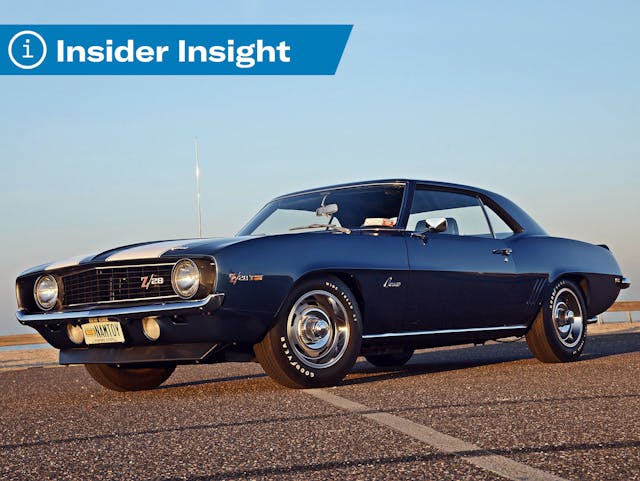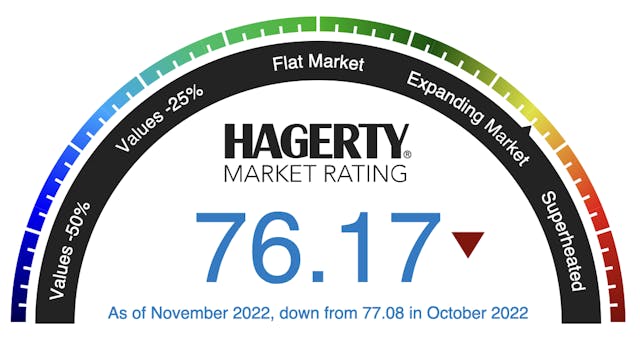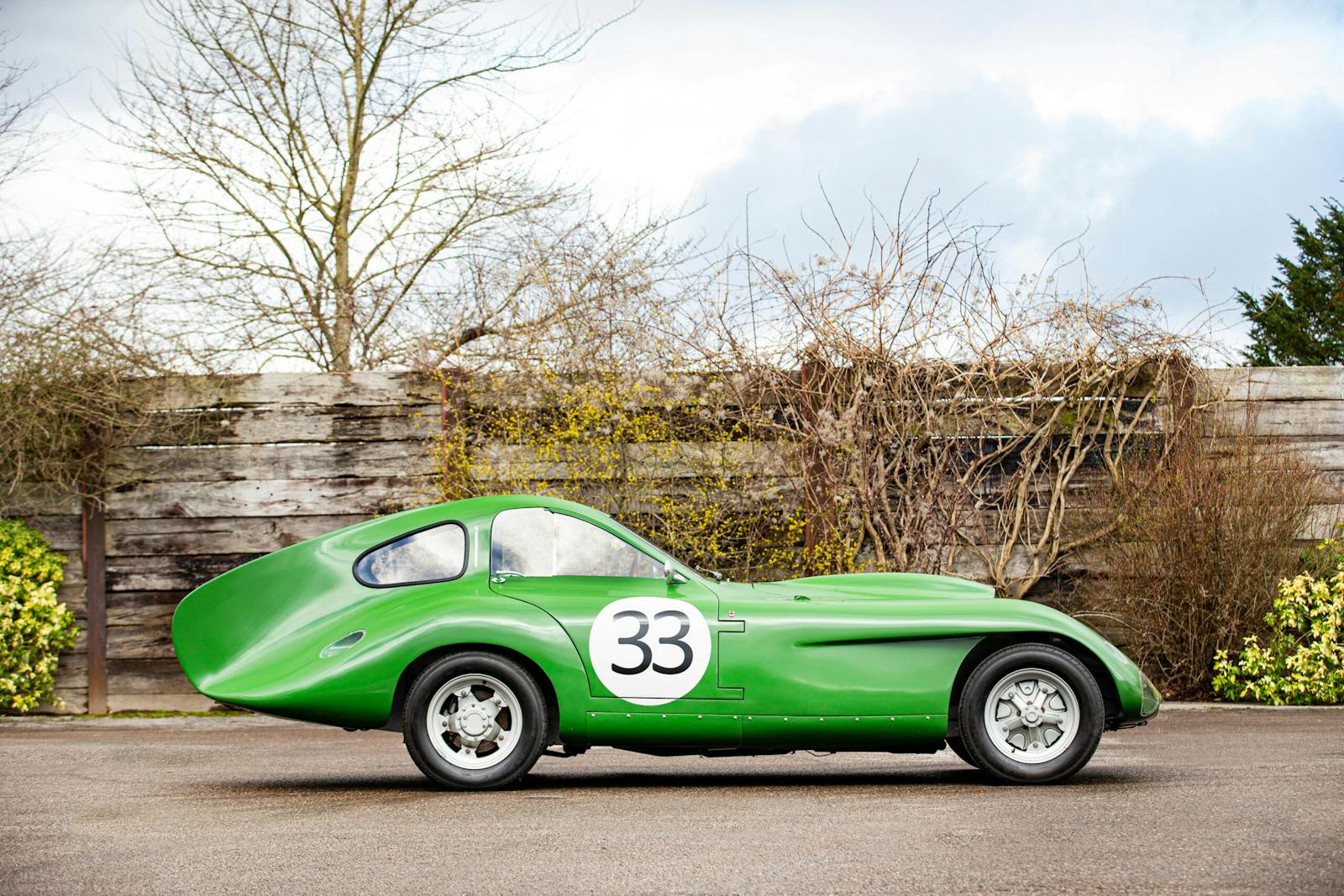Economic storm clouds are starting to cool off the collector car market

The Hagerty Market Rating continued its downward slide, dropping nearly a full point this month to its lowest value since February 2022.
We should start by reminding you that the Hagerty Market Rating is not an index of car values (we have plenty of those). Rather, it’s a monthly measure of the “heat” of the market that takes into account, among other things: auction and private sales, insurance data, macro-economic factors (i.e., S&P 500, inflation), and industry sentiment. All to say, a return to February 2022’s rating does not necessarily mean that the past year’s appreciation has been wiped out. It does, however, clearly reflect the fact that the feeding frenzy we witnessed during the summer is over.
Inflation has been one of the key factors weighing on the rating in recent months. This has had the greatest effect on diminishing the high sales prices we’ve seen at auction. The current 12-month median sales price at auction is $34,560, the highest it’s ever been. But, when adjusted for inflation, this metric ranks 18th all-time and does little to push the Market Rating upward.
Optimism from our industry experts is waning as well. While they still rate the market in the “expanding market” range on the 100-point scale, expert sentiment is at the lowest point since April 2021, citing rising interest rates and economic uncertainty as their chief concerns. The Case-Shiller U.S. National Home Price Index continues to slide, down three months in a row after more than two years of growth. The S&P 500 has fallen to levels not seen in nearly two years, and gold has dropped to pre-pandemic levels.

Given all that bad news, it’s notable that the car market itself remains as fundamentally strong as it is. Many segments seem to be consolidating the unprecedented appreciation we saw earlier in the year. The percentage of cars selling above insured value dropped back below 50 percent but is still at its fourth-highest value ever. Insured values themselves continue to increase across the board, although the ratio of increases to decreases on high-end cars dropped slightly this month, ending a 24-month streak of consecutive growth.
To put this into perspective, for every one high-end car (above $200,000) where an owner decreases the insured value, more than five called to increase the value. This ratio is even more striking for the rest of the market (vehicles under $200,000): For every person calling to decrease the value of their car, seventeen are calling to bump the value up.
Having said that, our key source of truth when it comes to what cars are going for is the Hagerty Price Guide, which after a boom during the pandemic is starting to taper off. The Hagerty Hundred (a weighted average of values for 100 most popular year/make/models insured by Hagerty that are published in the price guide) continues to fall even as insured values climb.
Even vehicles in the price guide that continued to appreciate fell behind inflation, in many cases. Although the average value for vehicles in daily driver (#3, or Good) condition is near a record high, when adjusted for inflation it’s the lowest since May 2014.
Despite all the gloom, there’s no question that 2022 has been an incredible year for the classic car market. After cars in much of the country are winterized and packed away for the season, owners will have a chance to breathe and reflect on a superheated year. Meantime, the Federal Reserve will continue its fight to tamp down inflation without taking the air out of the economy. Its success in the waning months of the year will surely influence where our rating sits when auction companies pitch their tents once again in January 2023.

Check out the Hagerty Media homepage so you don’t miss a single story, or better yet, bookmark it.

